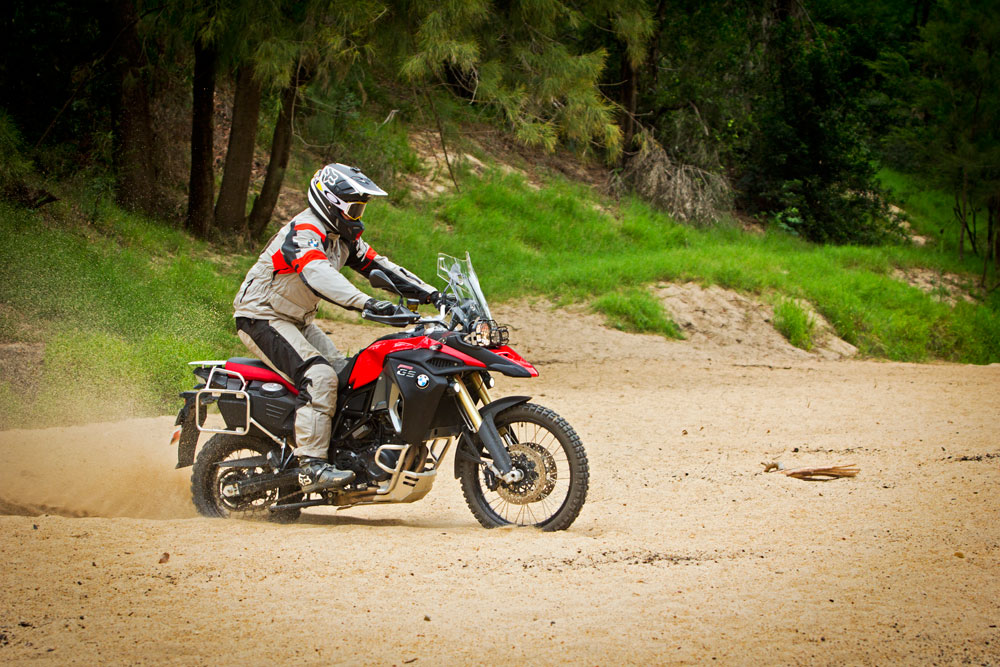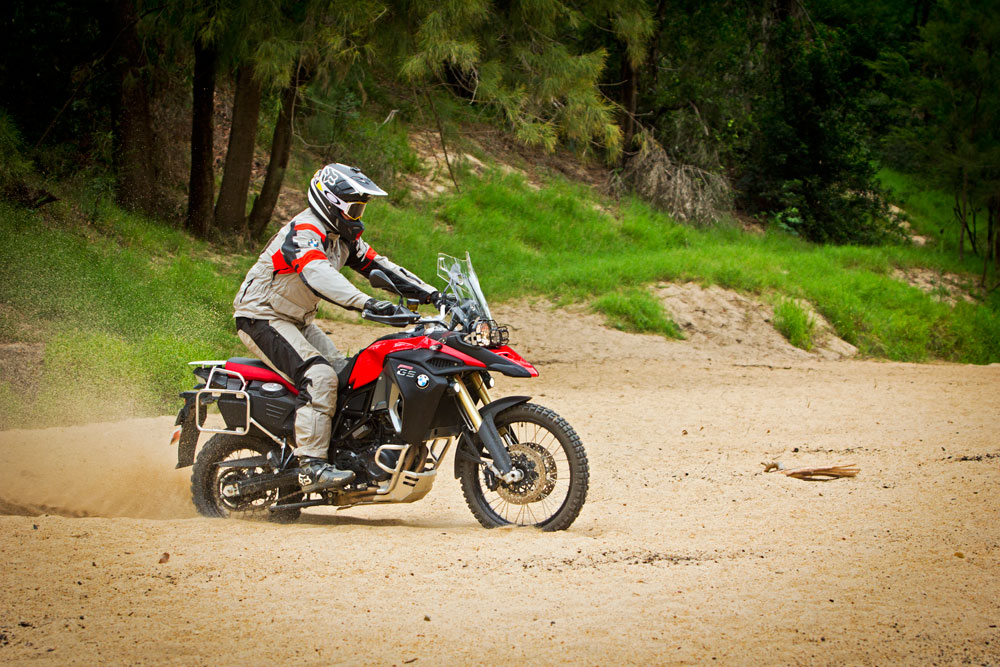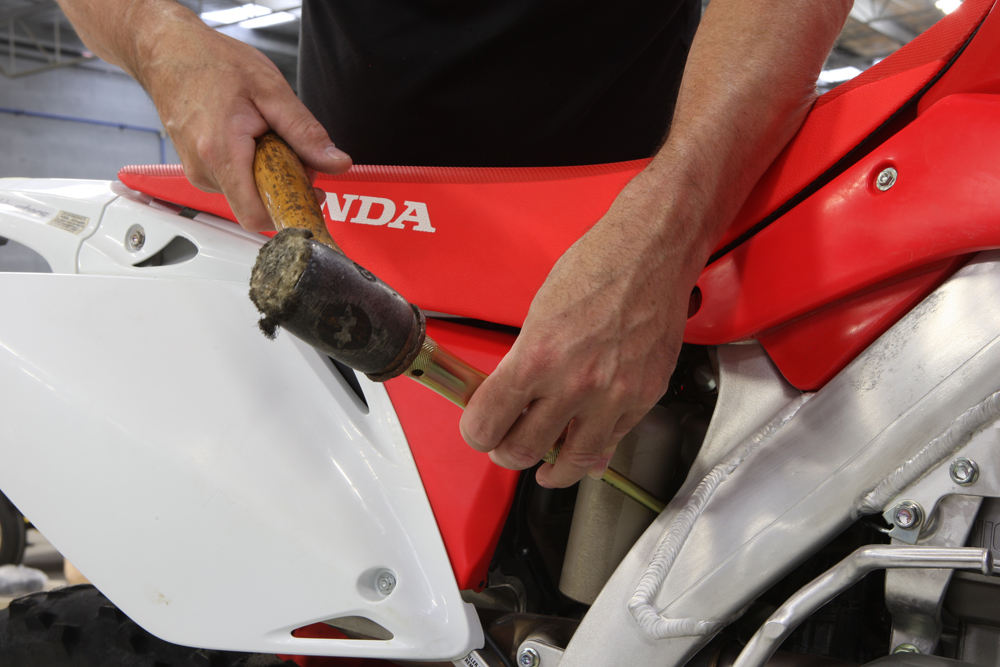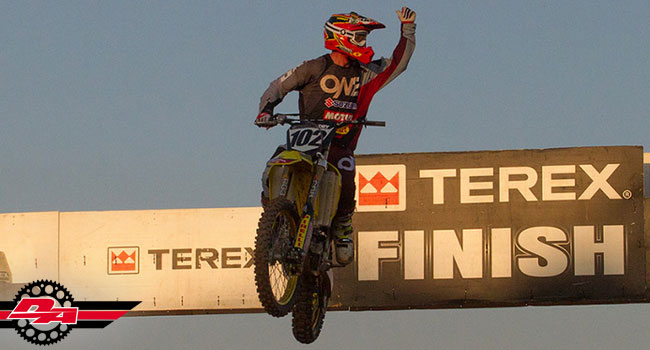
We look at how to deal with the soft stuff — an intimidating prospect on an adventure bike
STORY SHANE BOOTH | PHOTOGRAPHY MATT BERNARD

Riding an adventure bike that weighs north of 200kg through soft sand requires not only the correct technique but an understanding of what you’re trying to achieve with that technique. You should only consider going on a ride that has significant sand sections if you’ve spent some time practising in sand and have some solid off-road riding experience.
MOMENTUM IS KEY
The ultimate goal in the sand is to maintain momentum. Everything covered after this has the aim of helping you keep the bike light on the sand and stop it sinking in and coming to a standstill or, worse, falling over. Building and maintaining forward momentum will keep the bike up on top of the sand, much like getting a boat up on a plane.
In a perfect world, you go from a firm surface into the sand and you can carry some momentum in. But at some point you will most likely stop in the sand and have to get moving again — this can be tricky.
You will need smooth clutch release combined with increased throttle to get the bike moving. It may sink initially before it gets moving but continue to adjust the throttle input to maximise forward movement while minimising how much the rear wheel is spinning and sinking. The key is to control the throttle input: too much and you’ll sink the rear wheel and get stuck; not enough and you’ll never get the bike up on top of the sand.
It requires some delicate throttle control but, as you start to build some forward momentum and get up on top of the sand, you should actually be able to use less throttle and maintain the same speed. You don’t need to keep increasing your speed to stay up on the sand; you just need to find the speed that keeps you on top and maintain it.
Once you’re on top of the sand, you can also shift up one gear and get the engine working in a nice torquey part of the power delivery. You don’t want to have the engine revving too hard — that will just increase wheel spin and also run the risk of overheating.
WEIGHT DISTRIBUTION
When you’re starting from a standstill in the sand you will want to get yourself as far back on the seat as possible to add weight to the rear wheel and assist in gaining traction. As you release the clutch, you can actually bounce your weight up and down on the rear of the seat to help get some drive. The bike should slowly build some forward momentum.
As soon as it’s comfortable to do so, you should try to get up in the standing position and lean your weight back like in this photo. There are many benefits to standing up in the sand: you can distribute your body weight as needed much easier when you’re standing; you can also use your legs to grip the bike and help keep it as straight as possible in the loose sand. Your field of vision also greatly improves when you stand up and keeping your eyes up and looking ahead is key to riding in sand.
By standing up and leaning back slightly, you take some weight off the front wheel and at the same time add some to the rear; this in turn helps keep the front wheel on top of the sand and the rear wheel driving.
GET COMFORTABLE WITH MOVEMENT
Once you have your control use and body position sorted, the last thing you need to get used to is the movement of the bike in the sand. It will never feel as solid as it does on a firm surface. The bike is always going to feel a little squirmy underneath you but as you become more comfortable you’ll learn not to fight every little movement.
Quite often, sand riding will be physically exhausting when you first try it, but as you get more comfortable you’ll start to relax and work with the bike. Don’t get trapped into looking at all the other wheel tracks and think you have to try follow them. This is where looking ahead is so important: keep your eyes up and looking where you want to go and you’ll make your own tracks.
TYRE PRESSURES
If you’re going to be on the sand for extended periods, dropping your tyre pressure as low as 15psi will help traction levels. Before you do, though, make sure you have something with you to reinflate the tyres before moving onto any sort of firm surface.



